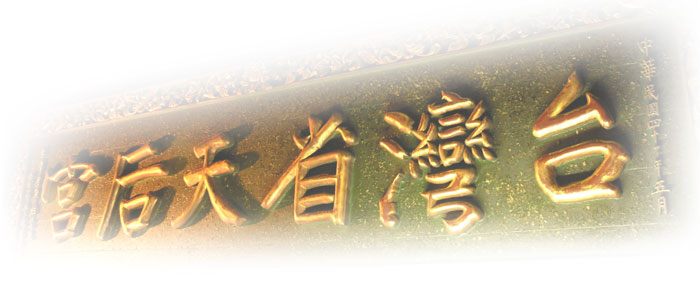 |
|
|
|
|
|
 |
From Hongfa Temple to Taipei Tianhou Temple |
|
 |
| |
|
| |
| From Hongfa Temple to Taipei Tianhou Temple |
| |
After WWII, the Japanese withdrew from Taiwan and the
local religions and folk beliefs began to revive and flourish. In the
meantime, believers of the Xinxing Temple started to look for a
new home for the deities sojourning in the rear hall of Lungshan
Temple.
There are two versions regarding why the deities of the
Xinxing Temple were moved into the Hongfa Temple in Ximending
. One version is that the believers simply remodeled the main hall
of Hongfa Temple built in the Japanese. Colonization period for the
consecration of Mazu after the restoration of Taiwan. At that time,
the Hongfa Temple was a temple of the typical Japanese style for
Japanese monks to chant or recite scriptures or prayers and worship
their gods. It was not until 1950 when Japanese monks returned to
Japan with their alms bowls that the temple was handed over to the
Department of Education of Taipei City Government. Believers of
this temple finally took over Hongfa Temple with restless efforts and
enthusiasm and changed it into the Taiwan Province Tianhou Temple.
Another version has it that after WWII, Huang Qi-ruei,
commissioner of Education Department of Taipei City Government
, reallocated the Lotus Temple on XiNing South Road in 1948 for
believers to worship Mazu. Yet, since the Lotus Temple faced the
east, which was different from the direction ( situated in the north
facing toward the south ) of the original Mazu temple, most
followers believed that this new site was not a good choice.
Alternatively, they found the Hongfa Temple located on ChengDu
Road next to the Ximen Market as the new temple site, and selected
the first day of the sixth moon of the lunar calendar 1948, for
holding the moving-in ceremony. In a splendid parade, the Mazu
deity that previously sojourned in the rear hall of Lungshan Temple
was escorted with utmost respect all the way to the new home on
ChengDu Road. Although this incident irritated clergymen living in
the Hongfa Temple who protested and appealed to the central
government in Nanjing, accusing Huang Qi-urei, commissioner of
Education Department of giving illegal approvals. The verdict of
this administrative lawsuit was that Huang was not guilty, and the
incident thus came to an end. In the beginning, the temple authority
did not make much change to the interior decoration; the interior
remained the same with the former Hongfa Temple except that the
main hall was remodeled for consecration of Mazu. Therefore, the
entire temple at that time was still of the Japanese style. Also, when
the moving-in ceremony was just held, since the temple was called
Xinxing Temple when it was in Mankah, people still called it
Xinxing Temple. It was not until August 1952 after obtaining the
consent of Mazu that the temple was renamed the Taiwan Province
Tianhou Temple.
At the end of 1953, the temple was destroyed in a fire that
broke out in the Guoji Dancing Hall behind. Since the former Hongfa
Temple was of a wooden structure, the fire led to a disastrous result.
Fortunately, with the efficacy of the deities, none of the deities inside
was damaged. Due to insufficient funding, however, the immediate
reconstruction of the temple was not plausible. Therefore, a humble
wooden structure became a temporary housing of the deities. It was
not until the end of 1959, the millennium anniversary of Mazu's birth,
with the donation of believers that the reconstruction of the main hall
was initiated. The Yuhuang Hall, Zhonggu Tower and other buildings
later followed suit to form the present appearance of the temple today
. When Taipei City became a municipality in 1967, the temple also
Formally altered its name to the Taipei Tianhou Temple. |
 |
|
|



